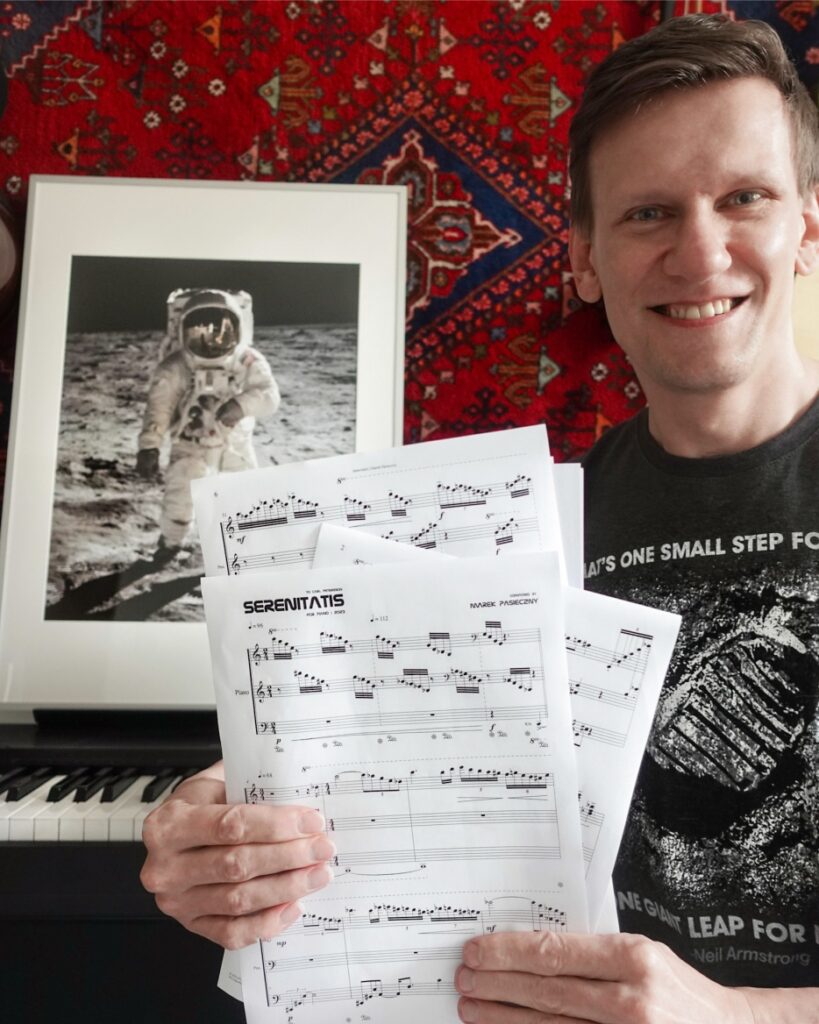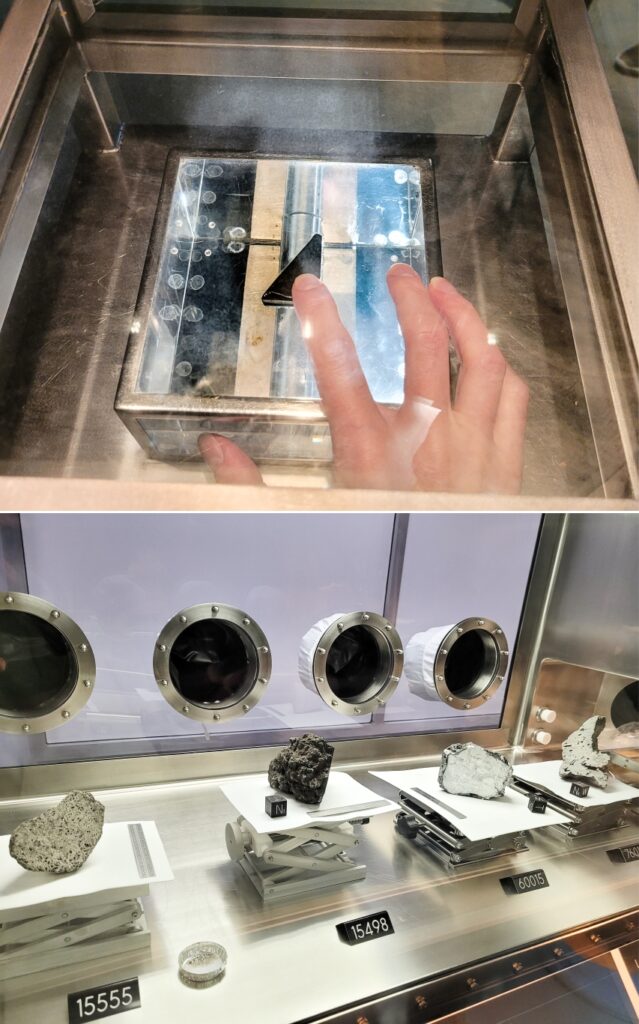
Serenitatis (for Piano solo)
From my earliest recollections, the cosmos has held an enduring fascination for me, particularly the American spaceflights of the Apollo program, culminating in the historic moon landing. In January ’23 I fulfilled my lifelong dream: visiting NASA’s Space Center in Houston.
One of the attractions at Space Center Houston is the Lunar Sample Laboratory Facility and Lunar Samples Vault. This facility hosts the largest display of Moon rocks on public view in the world. One of the incredible experiences is undoubtedly touching a fragment of the moon. Only eight lunar rocks are available for the general public to touch worldwide. The particular one I touched in Houston was brought back to Earth by the Apollo 17 crew in December 1972 and is 3.8 billion years old. Astronauts Schmitt and Cernan collected the sample in the Valley of Taurus-Littrow, located on the edge of the Sea of Serenity (Mare Serenitatis) in the upper right quadrant of the Moon as viewed from Earth.
A few months after returning to the UK, my friend Carl Petersson—an outstanding Swedish pianist currently living in Canada—reached out to me with a request to compose a solo piano piece for a rather unconventional album. The recording project would feature piano pieces inspired by the moon. My visit to Space Center Houston and the inspiration drawn from the place will be translated onto the musical score.
The primary inspiration shaping Serenitatis for me was the idea of depicting the moon’s gravity (1.62 m/s²) in a musical manner. I decided to create something resembling fluid or moving harmony (the vertical texture of the piece) and embellish it with a continuous rising and falling motion (the horizontal texture of the piece), often-in opposing directions.
The harmony of Serenitatis constantly migrates. Sometimes very imperceptibly (already in the theme presentation with half-tones), and sometimes very radically (the cascading opening arpeggios, arpeggio ranges closing the composition, and the transformation of the composition itself). To capture the atmosphere of the night, but above all the vast shades of grey, silver, and finally black (which the moon reminds me of), I decided to construct nearly 80% of Serenitatis’ harmony from pure minor chords that constantly clash and complement each other.
Serenitatis is also a distant reminiscence of the form of nocturne – music of the night. An echo of the typical theme texture (melody) that appears especially in the nocturnes of Frédéric Chopin. Hence, the main theme of Serenitatis has a very chromatic, fleeting, and lyrical character. The theme itself gravitationally changes—each successive presentation (increasingly fuller) drifts in half-tones.
Gravity is also reflected in the rhythm. Based on initial static triplets (the left-hand texture recurring as a 'nocturnal’ accompaniment in the left hand), the main theme and its development seem to continually appear in an open (rhythmically and harmonically), almost ethereal character.
Despite the nocturnal character of the theme itself, Serenitatis is a virtuosic, lively, and energetic piece. It starts from the highest register of the piano but also concludes with a tremendous ascent from the lowest to the highest possible piano notes.
I hope that Serenitatis will take you and future performers on a short journey to the moon. The piece was commissioned and is dedicated to Carl Petersson.
Marek Pasieczny
Leeds, UK, November, 2023

